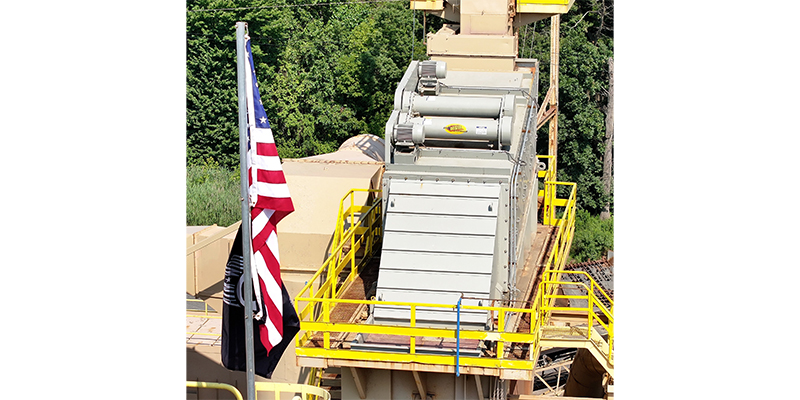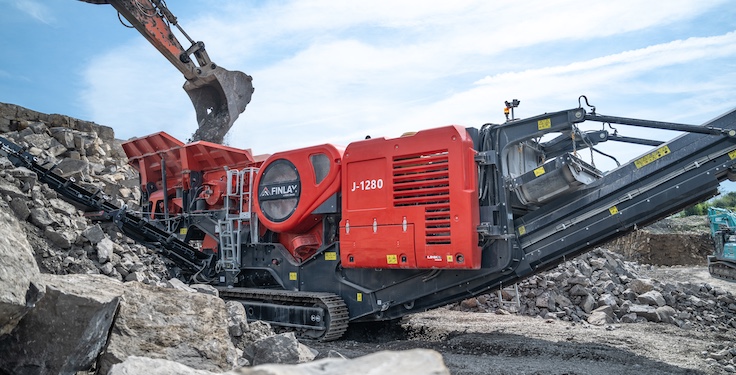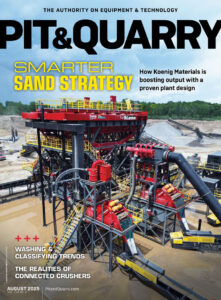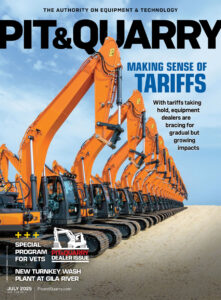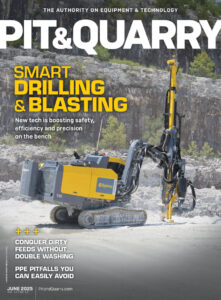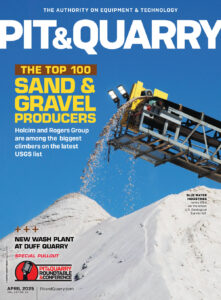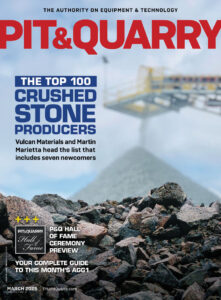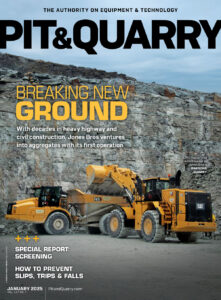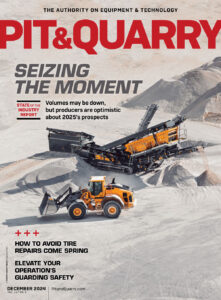Editor’s note: The following is a selected portion from the 2025 Edition of the Pit & Quarry University Handbook. The full handbook is slated for release this November, at which time additional content will be published online. Be sure to check back for more as it’s made available!
While rock crushing is at the heart of every aggregate operation, there isn’t one universal crusher design that handles this fundamental production process.
Several crusher types are utilized – and in a variety of crushing stages. Here’s a look at the types typically found within pits and quarries.
Crusher types
• Gyratory crushers. A gyratory crusher uses a mantle that gyrates or rotates within a concave bowl. As the mantle contacts the bowl during gyration, it creates compressive force and fractures the rock. Gyratory crushers are mainly used in applications that are abrasive or feature high compressive strength – or both. Gyratory crushers are often built into a cavity in the ground to aid in the loading process, as large haul trucks can access the hopper directly.
• Jaw crushers. Jaws are also compression crushers that take stone into an opening at the top of the crusher – between two jaws. One jaw is stationary while the other is movable. The gap between the jaws becomes narrower as stone moves deeper into the crusher. As the moveable jaw pushes against the stone in the chamber, stone is fractured and reduced, moving down the chamber to the opening at the bottom.
• Horizontal shaft impactors. Horizontal shaft impact (HSI) crushers have a shaft running horizontally through the crushing chamber, with a rotor that turns hammers or blow bars. HSIs use the high-speed impacting force of the turning blow bars hitting and throwing the stone to break the rock. They also use the secondary force of the stone hitting the aprons in the chamber, as well as stone hitting stone.
• Cone crushers. These are similar to gyratory crushers in that they have a mantle that rotates within a bowl, but the chamber is not as steep. They are compression crushers that generally provide reduction ratios of 6-to-1 to 4-to-1. Cone crushers are used in secondary, tertiary and quaternary stages.
• Vertical shaft impactors. The vertical shaft impact crusher (VSI) has a rotating shaft running vertically through the crushing chamber. In a standard configuration, the VSI’s shaft is outfitted with wear-resistant shoes that catch and throw the feed stone against anvils that line the outside of the crushing chamber. The force of the impact, from the stone striking the shoes and anvils, fractures it along its natural fault lines.
• Roll crushers. This is a compression reduction crusher type with a long history of success in a broad range of applications. The crushing chamber is formed by massive drums revolving toward one another. The gap between the drums is adjustable, and the outer surface of the drum is composed of heavy manganese steel castings known as roll shells that are available with either a smooth or corrugated crushing surface.
• Hammerills. Hammermill crushers are similar to impactors in the upper chamber where the hammer impacts the in-feed of material. The difference is that the rotor of a hammermill carries a number of “swing type” or pivoting hammers. Hammermills incorporate a grate circle in the lower chamber of the crusher. Grates are available in a variety of configurations. The product must pass through the grate circle as it exits the machine, ensuring controlled product sizing.
More from the P&Q University Handbook: Hauling | P&Q University Handbook

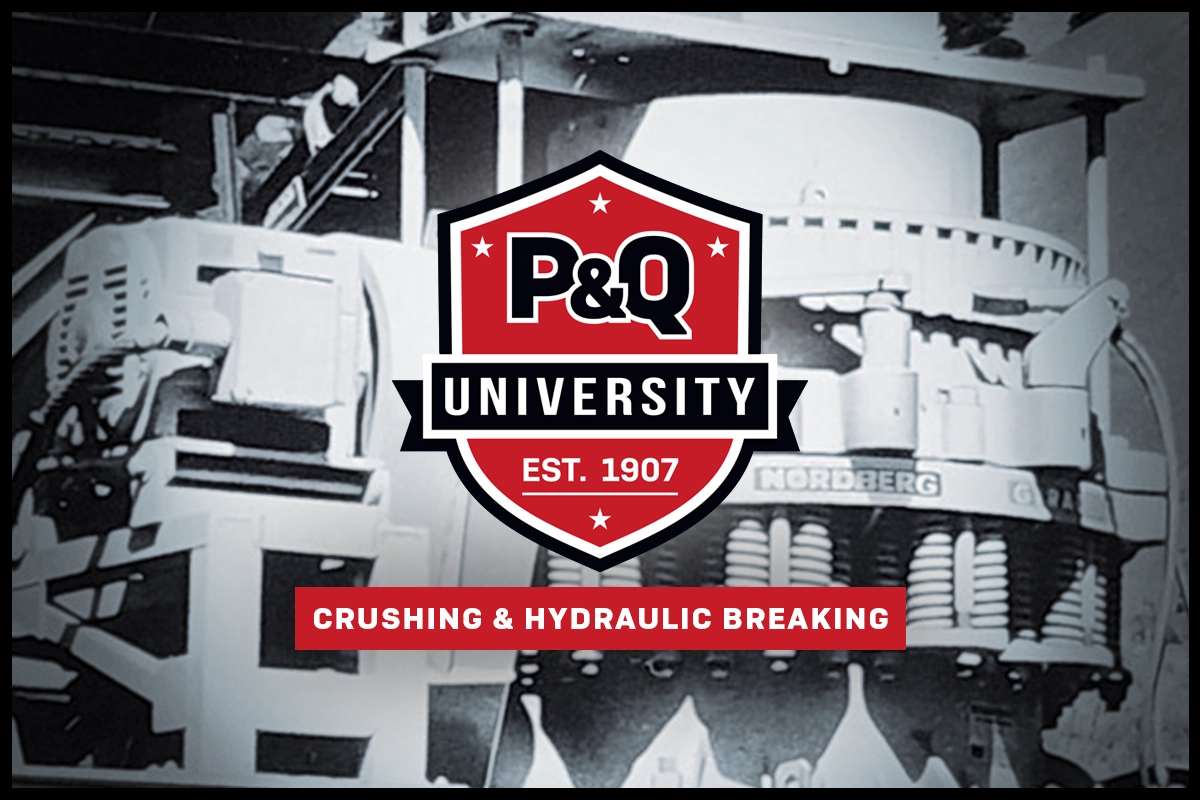
&uuid=(email))
&uuid=(email))
